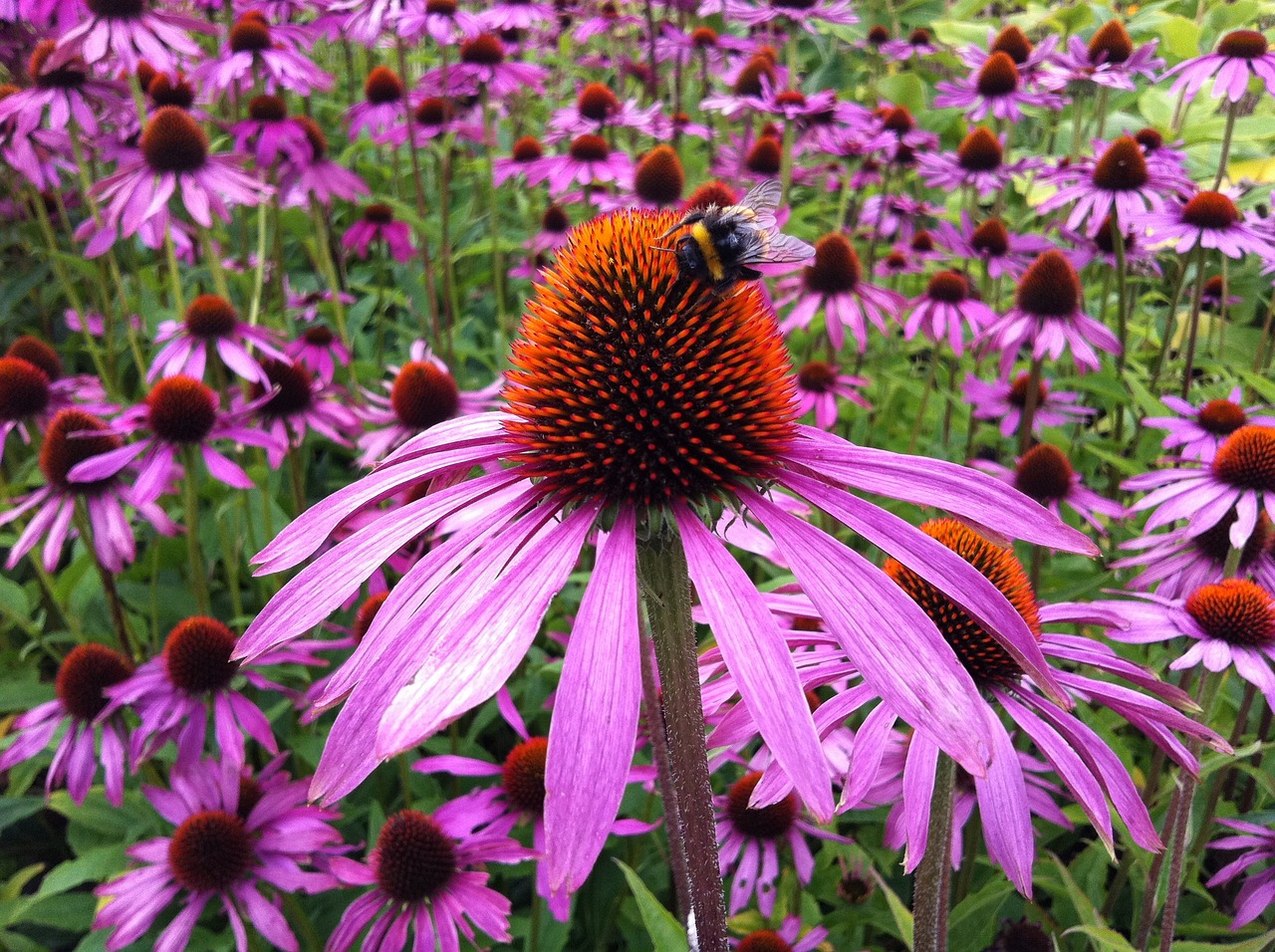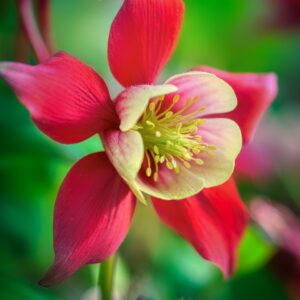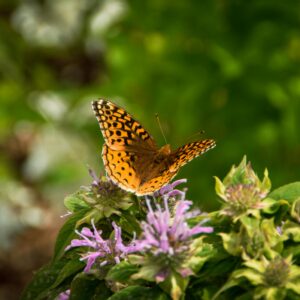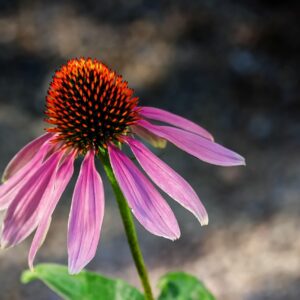The Native Purple Coneflower (Echinacea purpurea) is a well-loved perennial that is native to the central and eastern United States. Purple Coneflower is not only beautiful but also adds ecological value to garden spaces, supporting local wildlife and offering resilience in various garden conditions.
Appearance: This plant is known for its distinctive, daisy-like flowers with a central cone-shaped structure. The flowers are typically a vibrant purple, although some varieties may have shades ranging from pink to white.
Flowers: The coneflowers have large, showy petals that droop downward, revealing a prominent, spiky central cone that is usually orange-brown in color. Each flower head is about 3 to 4 inches across.
Height: Purple Coneflowers usually grow to a height of 2 to 4 feet (60 to 120 cm), with a spread of 1 to 2 feet (30 to 60 cm).
Leaves: The plant has coarse, lance-shaped leaves that are dark green and rough to the touch. The foliage forms a basal rosette at the base of the plant, with additional leaves extending up the flowering stems.
Blooming Season: The blooming period is from mid-summer to early fall, typically from June to September. The flowers are long-lasting and can attract pollinators like butterflies and bees.
Habitat: Purple Coneflowers thrive in full sun to partial shade and prefer well-drained soils. They are drought-tolerant once established and can handle a range of soil types, from sandy to clay.
Wildlife: This plant is highly attractive to pollinators, especially butterflies, and can also provide seeds for birds in the fall.
Uses: Besides its ornamental value, Purple Coneflower has been used traditionally in herbal medicine, primarily for its immune-boosting properties. It is also popular in gardens for its ease of care and ability to attract wildlife.
Cultivation: It is relatively low-maintenance, making it an excellent choice for both novice and experienced gardeners. Deadheading spent blooms can encourage more flowering, and the plant can be divided every few years to maintain its vigor.





